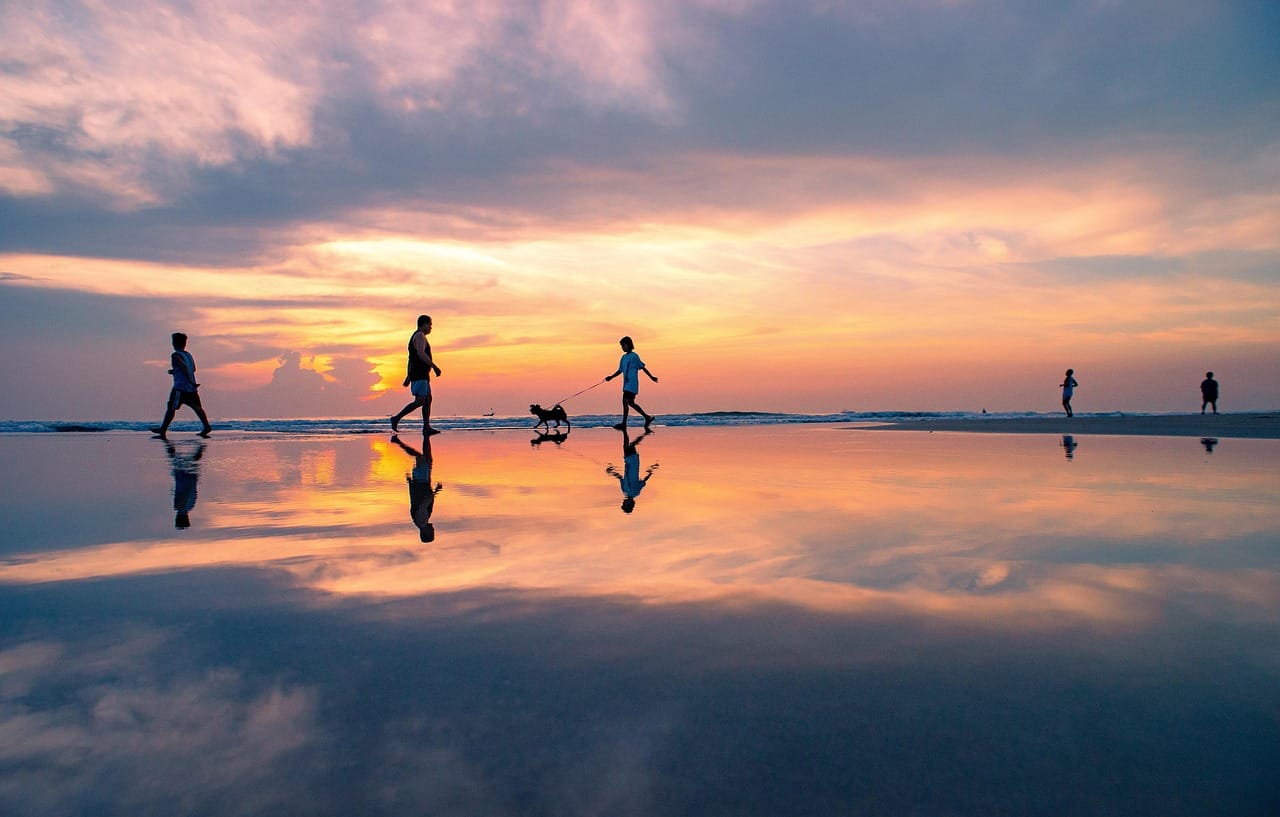Long-term travel is more than just an extended vacation; it’s a life-altering experience. Imagine trading your daily grind for breathtaking landscapes, vibrant cultures, and the freedom to explore the world at your own pace. It’s a journey of self-discovery, cultural immersion, and unforgettable memories. But how do you make this dream a reality? This comprehensive guide will equip you with everything you need to know to plan and execute your own incredible long-term travel adventure.
Planning Your Long-Term Travel Adventure
Embarking on a long-term trip requires careful planning. Unlike a short vacation, you’ll need to consider logistics, finances, and potential challenges over an extended period. This section breaks down the essential steps to ensure your adventure is both fulfilling and sustainable.
Setting a Budget & Saving
- Calculate Your Expenses: Estimate your daily spending based on your desired travel style and destinations. Research average costs for accommodation, food, transportation, activities, and visas in the regions you plan to visit. Websites like Nomad List and Budget Your Trip can be invaluable resources. For example, Southeast Asia generally offers a lower cost of living compared to Western Europe.
- Create a Realistic Budget: Add a buffer for unexpected expenses. Aim to save at least 10-15% more than your estimated budget.
- Automate Savings: Set up automatic transfers to a dedicated travel savings account.
- Reduce Expenses: Identify areas where you can cut back on spending. Consider temporarily downsizing your lifestyle, canceling subscriptions, or selling unused items.
- Consider Income Streams: Explore options for earning money while traveling, such as freelance work, teaching English online, or blogging.
- Example: A couple planning a year-long trip through South America might budget $30,000-$40,000, including flights, accommodation (mix of hostels and Airbnb), food, activities, and transportation.
Choosing Your Destination(s)
- Define Your Travel Style: Do you prefer backpacking, luxury travel, slow travel, or a combination? This will influence your destination choices.
- Research Visa Requirements: Understand the visa requirements for each country you plan to visit. Some countries offer long-term tourist visas or working holiday visas.
- Consider the Climate and Season: Research the best time to visit each destination to avoid extreme weather conditions.
- Prioritize Safety and Security: Check travel advisories and research the safety and security situation in each region.
- Assess Your Interests: Choose destinations that align with your interests, such as history, culture, nature, adventure, or food.
- Example: If you’re passionate about hiking, consider destinations like Nepal, Patagonia, or the Swiss Alps. If you’re interested in history and culture, explore cities like Rome, Kyoto, or Istanbul.
Essential Travel Documents and Preparation
- Passport and Visas: Ensure your passport is valid for at least six months beyond your planned return date. Apply for necessary visas well in advance.
- Travel Insurance: Purchase comprehensive travel insurance that covers medical emergencies, trip cancellations, and lost or stolen belongings. World Nomads is a popular option for long-term travelers.
- Vaccinations and Health Precautions: Consult with your doctor or a travel clinic to determine necessary vaccinations and health precautions for your destinations.
- Copies of Important Documents: Make copies of your passport, visa, driver’s license, and other important documents. Store them separately from the originals and upload them to a secure online storage platform.
- Notify Your Bank and Credit Card Companies: Inform your bank and credit card companies of your travel plans to avoid having your cards blocked.
- Set Up International Banking: Consider opening a bank account that allows for easy international transfers and withdrawals.
- Example: Download the Smart Traveler Enrollment Program (STEP) app, which allows you to register your trip with the U.S. Embassy and receive important safety updates.
Essential Gear and Packing Strategies
Packing for long-term travel requires a minimalist approach. You’ll need to choose durable, versatile gear that can withstand the rigors of travel while keeping your luggage weight manageable.
Choosing the Right Backpack or Luggage
- Backpack vs. Suitcase: Consider your travel style and destinations. A backpack is ideal for backpacking adventures, while a suitcase might be more suitable for urban travel.
- Size and Weight: Choose a backpack or suitcase that is lightweight and comfortable to carry. A good size for a backpack is typically between 40-60 liters.
- Durability: Invest in high-quality luggage made from durable materials.
- Features: Look for features such as multiple compartments, compression straps, and comfortable straps.
- Example: Osprey backpacks are renowned for their durability and comfort, while Rimowa suitcases are known for their high-quality construction and sleek design.
Packing Light and Efficiently
- Create a Packing List: Plan your wardrobe carefully and create a packing list to avoid overpacking.
- Choose Versatile Clothing: Pack clothing that can be mixed and matched to create multiple outfits. Focus on neutral colors and lightweight fabrics.
- Roll Your Clothes: Rolling your clothes saves space and minimizes wrinkles.
- Use Packing Cubes: Packing cubes help organize your luggage and compress your clothes.
- Limit Shoes: Shoes take up a lot of space, so limit yourself to two or three pairs.
- Leave Behind Non-Essentials: Be ruthless when packing. If you’re not sure if you’ll need something, leave it behind.
- Example: Pack a merino wool base layer, as it’s lightweight, moisture-wicking, and odor-resistant, making it ideal for various climates and activities.
Tech Essentials for the Digital Nomad
- Laptop or Tablet: Essential for staying connected, working remotely, and managing your travel plans.
- Smartphone: For communication, navigation, and entertainment.
- Power Adapter: Universal power adapter to charge your devices in different countries.
- Portable Charger: To keep your devices powered up on the go.
- Noise-Canceling Headphones: For blocking out distractions on planes, trains, and buses.
- Camera: To capture your travel memories.
- Example: A travel router can create a secure Wi-Fi network from public hotspots, protecting your data.
Staying Connected and Managing Finances
Staying connected and managing your finances are crucial aspects of long-term travel. You’ll need to maintain communication with friends and family, access your bank accounts, and handle transactions securely.
Communication Strategies
- International SIM Card or eSIM: Purchase a local SIM card or eSIM in each country to access affordable data and calls.
- Wi-Fi Hotspots: Utilize free Wi-Fi hotspots in cafes, libraries, and public spaces. Be cautious when using public Wi-Fi and avoid accessing sensitive information.
- Messaging Apps: Use messaging apps like WhatsApp, Skype, and Facebook Messenger to communicate with friends and family.
- Video Calls: Schedule regular video calls with loved ones to stay connected.
- Social Media: Share your travel experiences on social media to keep friends and family updated.
- Example: Google Fi offers international data coverage in many countries, making it a convenient option for travelers.
Managing Your Money on the Road
- Travel Credit Cards: Use travel credit cards that offer rewards, travel insurance, and no foreign transaction fees.
- ATM Withdrawals: Withdraw cash from ATMs as needed, but be aware of ATM fees and withdrawal limits.
- Mobile Banking Apps: Use mobile banking apps to monitor your account balances and transactions.
- Budgeting Apps: Use budgeting apps to track your expenses and stay within your budget.
- PayPal or TransferWise: Use PayPal or TransferWise for international money transfers.
- Example: Keep a separate emergency fund in a high-yield savings account that you can access if needed.
Dealing with Currency Exchange
- Research Exchange Rates: Research the current exchange rates before exchanging money.
- Avoid Airport Exchange Counters: Airport exchange counters typically offer unfavorable exchange rates.
- Use Local Banks or ATMs: Exchange money at local banks or withdraw cash from ATMs for better rates.
- Credit Card Transactions: Use your credit card for purchases whenever possible to avoid currency exchange fees.
- Example: Download a currency converter app to easily calculate exchange rates on the go.
Health, Safety, and Wellbeing on the Road
Maintaining your health, safety, and wellbeing are paramount during long-term travel. You’ll need to be prepared for potential health issues, safety risks, and the challenges of living in unfamiliar environments.
Prioritizing Physical Health
- Healthy Diet: Maintain a healthy diet by eating a variety of fruits, vegetables, and whole grains. Be mindful of food safety and hygiene in developing countries.
- Regular Exercise: Incorporate regular exercise into your routine, such as walking, hiking, swimming, or yoga.
- Adequate Sleep: Get adequate sleep to maintain your energy levels and immune system.
- Stay Hydrated: Drink plenty of water throughout the day to stay hydrated.
- Sun Protection: Protect your skin from the sun by wearing sunscreen, hats, and sunglasses.
- Example: Pack a small first-aid kit with essential medications, bandages, and antiseptic wipes.
Ensuring Personal Safety
- Be Aware of Your Surroundings: Pay attention to your surroundings and be aware of potential risks.
- Avoid Walking Alone at Night: Avoid walking alone at night in unfamiliar areas.
- Secure Your Belongings: Keep your belongings secure and avoid displaying expensive items.
- Trust Your Instincts: If something feels wrong, trust your instincts and remove yourself from the situation.
- Learn Basic Self-Defense: Consider taking a self-defense class to learn basic techniques.
- Example: Keep a whistle or personal alarm on hand in case of emergency.
Mental and Emotional Wellbeing
- Stay Connected: Maintain contact with friends and family to avoid feeling isolated.
- Practice Mindfulness: Practice mindfulness and meditation to reduce stress and anxiety.
- Journaling: Journaling can help you process your experiences and emotions.
- Connect with Other Travelers: Join online travel communities or attend local meetups to connect with other travelers.
- Seek Professional Help: If you’re struggling with mental health issues, seek professional help from a therapist or counselor. Many offer online sessions.
- Example: Take breaks from travel to relax and recharge. Spend time in nature, read a book, or indulge in your hobbies.
Conclusion
Long-term travel is an incredible opportunity for personal growth, cultural immersion, and unforgettable experiences. By carefully planning your trip, packing efficiently, managing your finances, and prioritizing your health and safety, you can embark on an adventure that will change your life. Remember to stay flexible, embrace the unexpected, and savor every moment of your journey. The world is waiting to be explored!




